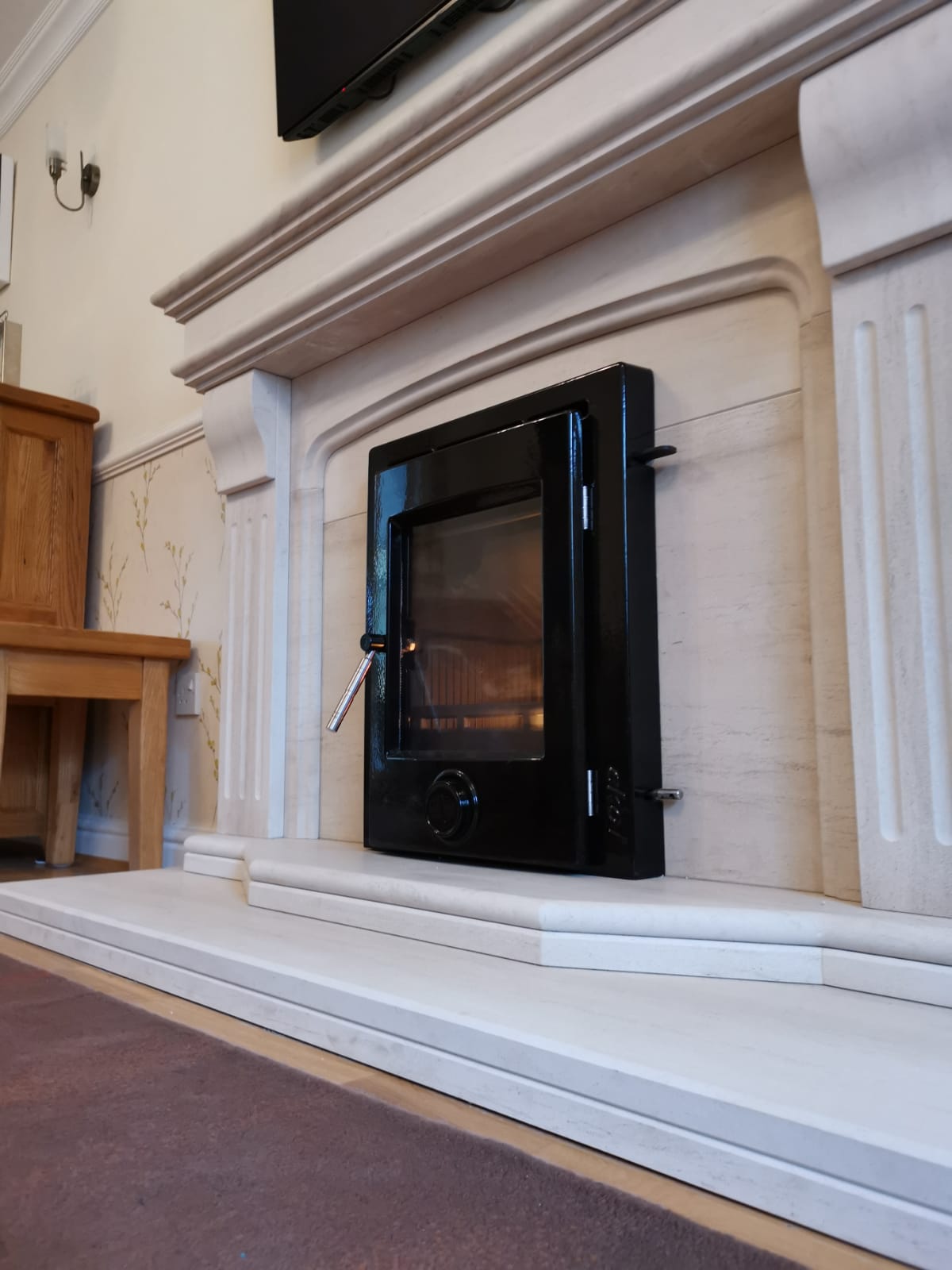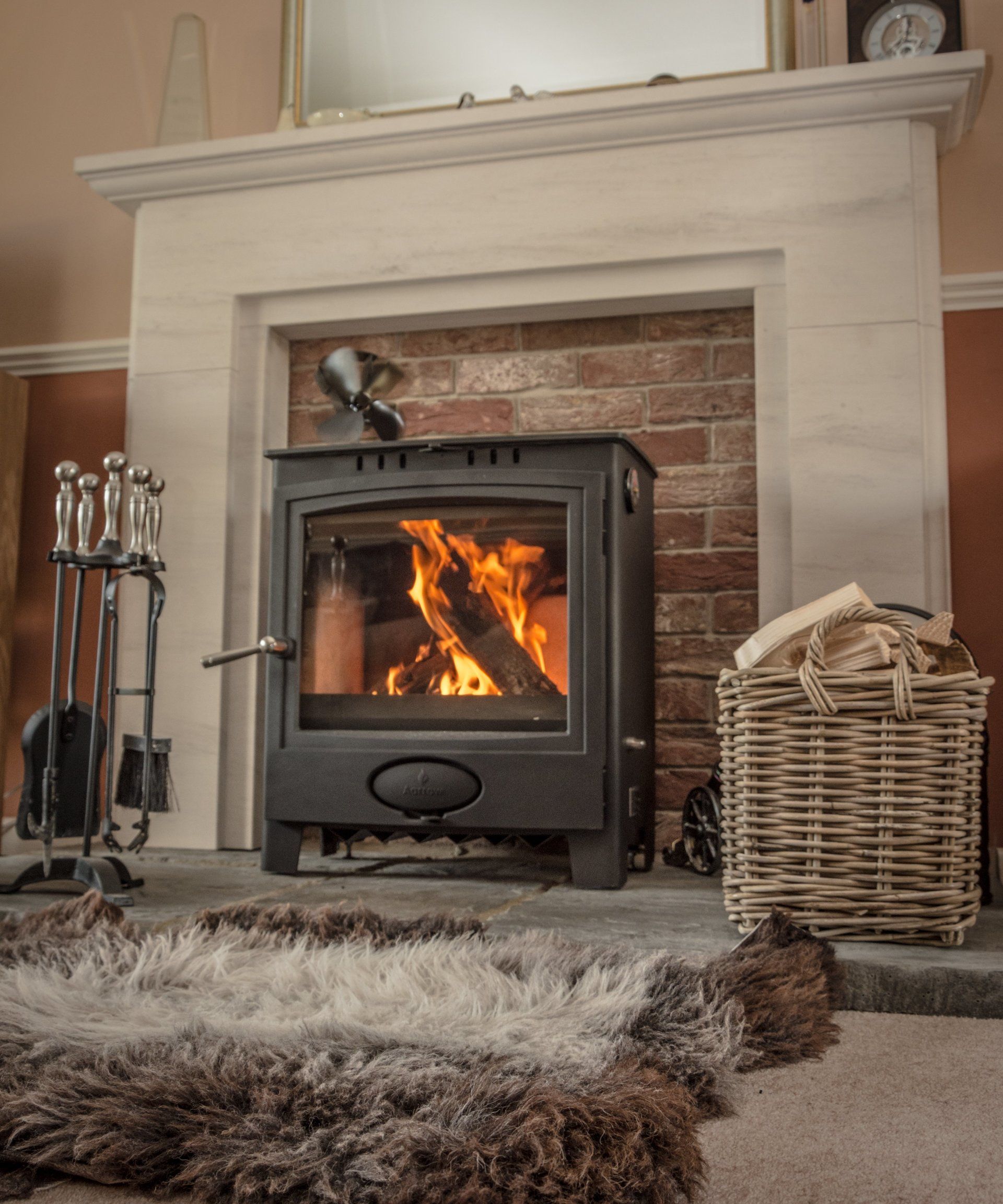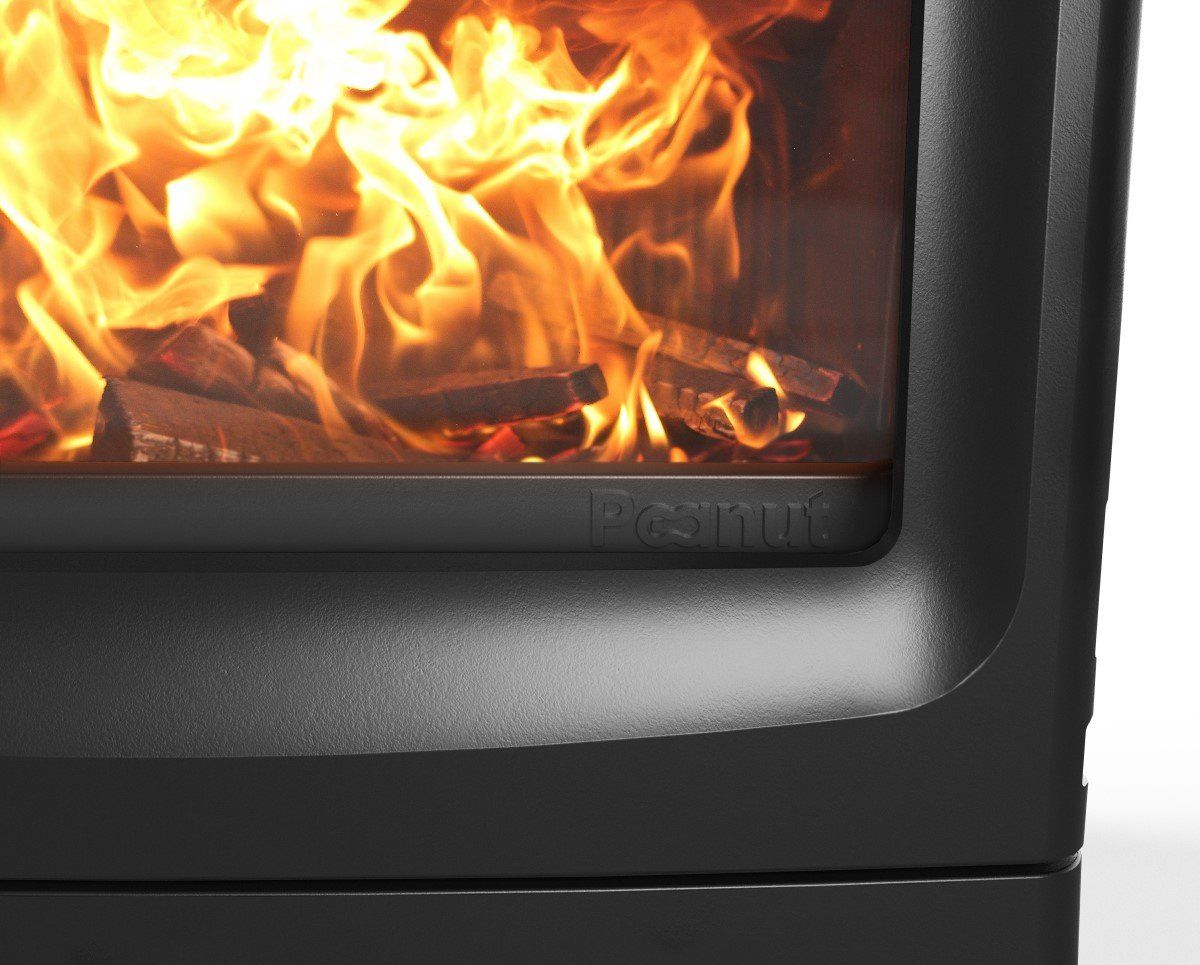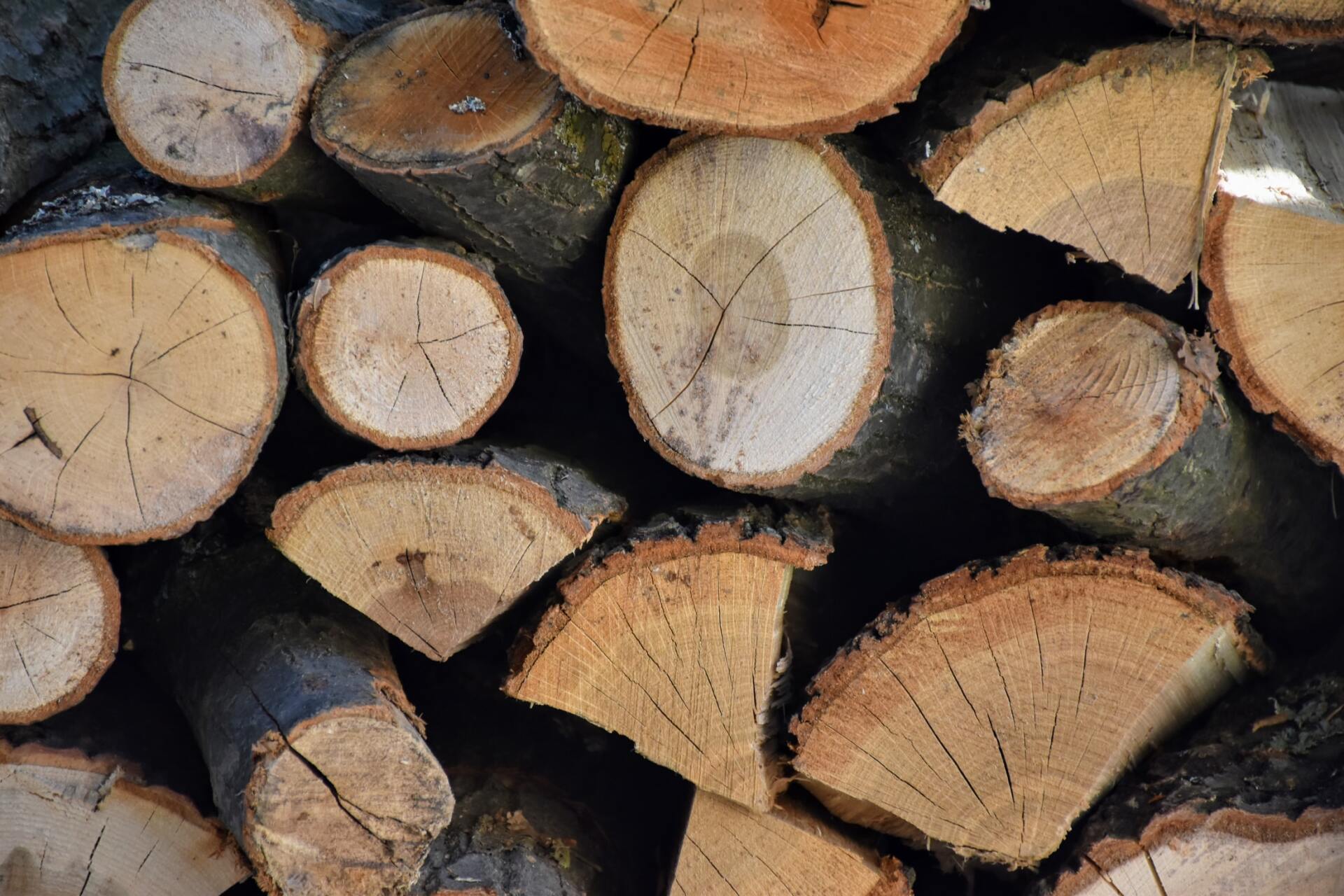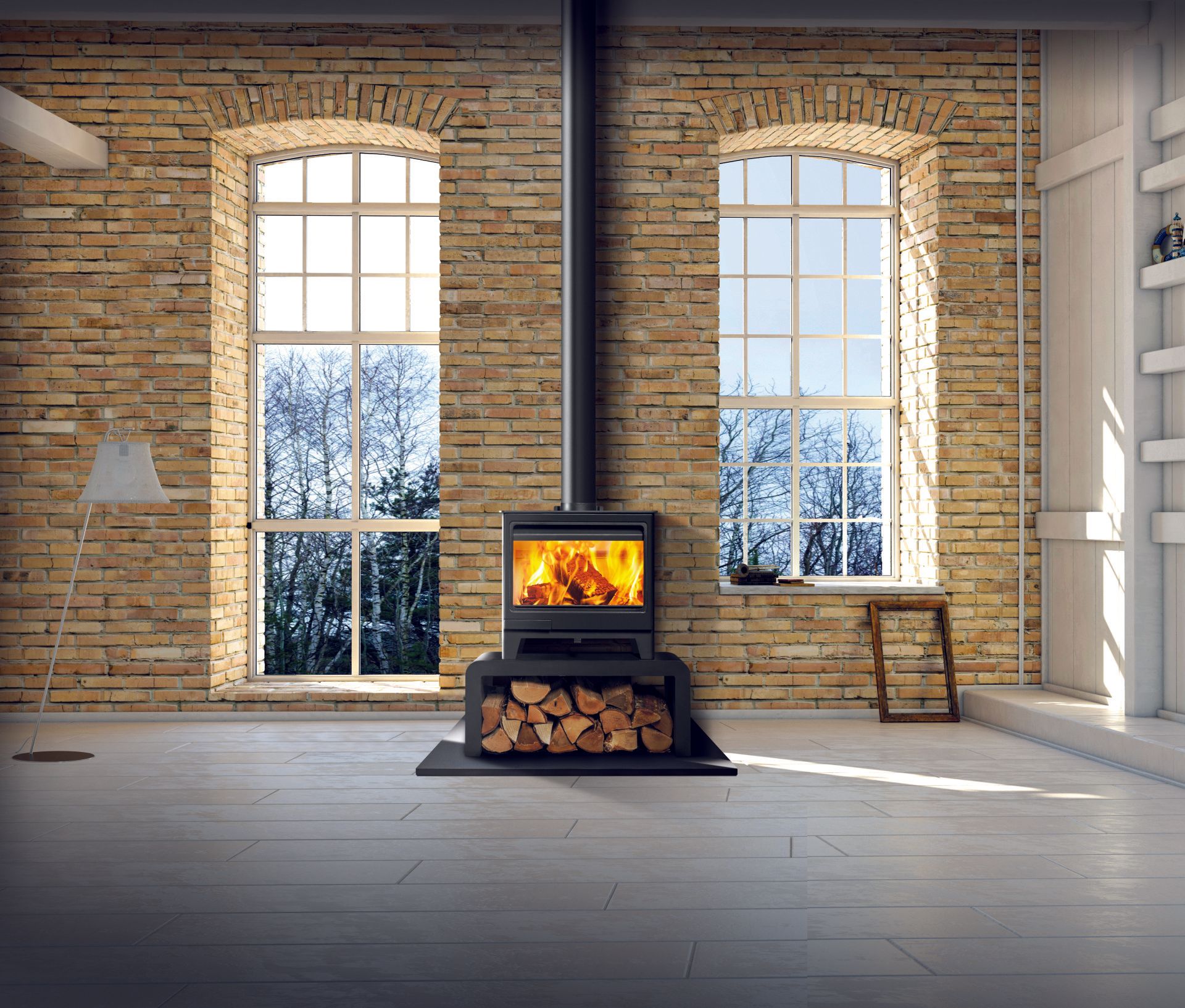Quick Cleaning
A quick clean up every time you use your fire is vital when it comes to limestone. Due to its pale colour, marks can occur easily. A quick clean up of any dust, dirt and debris aids in preventing stains from forming.
Quick cleaning methods:
- ·Dust limestone with a non-abrasive cloth:
This can be done dry or wet.
If using a wet cloth, dampen with water, and gently wipe. Pat limestone dry with a non-abrasive cloth/towel.
- Sweep with a soft brush.
- Hoover using brush adapter.
Thorough Cleaning
Limestone is more prone to marks than other stones and materials due to it being naturally pale and a more thorough weekly clean will help to remove unsightly marks and potential stains.
You will need;
- A soft brush.
- A dustpan.
- A bucket.
- A mild washing up liquid.
- A non-abrasive cloth.
- A dry towel/cloth.
Our recommended a thorough cleaning routine is as follows;
- Sweep limestone with a soft brush to remove any debris and dust and/or Gently hoover with a brush adapter.
- Put a few drops of a mild washing up liquid into a bucket of hot water. Wipe down hearth with a solution using a non-abrasive cloth or sponge. You can scrub hard so long as you aren’t using anything abrasive. (It is important that this is only a very mild dilute solution, so it won’t cause any staining or damage)
- Then wipe down again with clean warm water (without any soap). Ensure no soapy residue is left behind.
- Gently wipe/pat hearth down with a dry cloth, getting the limestone as dry as possible.
- Allow limestone to dry before using any additional cleaners or polishing. Limestone will appear darker when wet and can take a few days to completely dry out.
Like in all our cleaning advice, the regularity in which you do a thorough clean is dependant on how often you use your fire. During the winter period if you use your fire:
- · Once or twice a week – We advise cleaning with soapy water every two weeks to 4 weeks dependant on build up.
- · Three to seven days a week – We advise cleaning with soap and water once a week.
We do advise cleaning with soapy water once every month or so during the summer period even while the fire is out of use, to avoid any stubborn marks and stains forming.
Due to limestone being particularly porous and prone to marks this may have to be done more regularly than what we have stated above. If you feel it needs cleaning more often, then do not hesitate to do so.
Tips and tricks for common stains and marks (and how to avoid them).
Liquid Spillages
This is the most common cause of markings on limestone/ If you spill water, a drink etc. clean it up as soon as possible. Limestone is porous so any liquid spillages can soak in and cause staining. To clean liquid spillages, follow the same cleaning instructions as you would for a weekly clean using a very dilute solution of warm, soapy water.
Food Spillages
If food gets spilt on your limestone, clean it off as soon as possible. Due to granite being porous any oils in your food can soak into the stone. When food is spilt, follow the same instructions and the weekly clean.
Watermarks
Watermarks are also a common occurrence, vases, glasses and mugs often leave this mark behind. To clean watermarks away, follow the weekly cleaning instructions, using very dilute, warm, soapy water solution.
If markings persist after repeated use of a very dilute solution of warm soapy water, then you can use sandpaper to remove a layer, which usually removes the stain if it hasn’t soaked to far in. If this does not work, then a deep clean is recommended.
The best ways to avoid these marks is to;
- Avoid placing anything containing a liquid on limestone, however, we understand that this is not always avoidable or preferable. Therefore, you can also place non-combustible coasters (ceramic, stone etc.) or protective coverings under anything that contains a liquid (e.g. Vases, mugs, glasses etc.).
- Avoid eating near limestone.
- We strongly advise not placing ashtrays or cigarettes near limestone as it can cause brown scarring to the stone that is incredibly hard to remove.
- Avoid standing logs and coal directly onto limestone, if you are using a coal hod/scuttle, we advise placing a non-combustible covering beneath it.
- Avoid standing candles directly on limestone.
Deep Cleaning
You may feel it necessary to do a deep clean, we always advise repeating the thorough cleaning steps on marks and stains before starting a deep clean. Hot soapy water will remove most marks and stains. If you decide a deep clean is needed, we offer the following advise;
- Only use cleaners designed specifically for limestone fireplaces. Many cleaners, such as kitchen and bathroom cleaners can react to the limestone and cause irreparable damage.
- Always follow the manufacturer's instructions, as they can vary between products.
- Always lay protective coverings around the area and wear protective clothing.
Sealing
As with all types of natural stone hearths and surrounds, sealing limestone can help protect it from marks and stains forming. However, all sealants can affect the natural appearance of the limestone, making it darker. If you decide you would like to seal your limestone our advice is as follows;
- Ensure the limestone is as clean as possible before applying. Marks and stains can be sealed in.
- Ensure the limestone is dry before applying. Unless manufacturer instructions advise differently.
- Only use a sealer designed specifically for limestone fireplaces.
- Always follow the manufacturer's instructions, as they can vary.
- Cover the area around the fireplace.
- Wear protective clothing.
WARNINGS
- Do not use sharp objects or abrasive materials whilst cleaning limestone, this can cause irreparable damage and scratches.
- Do not spray cleaners onto the limestone as this can also the colour.
- Sealing and deep cleaning can change the natural effect of limestone, such as colour or pattern.
- If stains & markings persist after wet cleaning, please contact the showroom and we will advise how to proceed. Do not apply a sealant as this can seal the stain into the stone.
- Due to limestone being porous liquid spillages can soak in and stain, all liquid should be cleaned off as soon as possible to avoid this.

